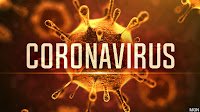 A Minyanville.com article reports that the widely-accepted inventor of the modern ATM, John Shepard-Barron, never patented his 1967 concept and so never derived financial benefit from what could have made him a billionaire before his death in May of this year at the age of 84.
A Minyanville.com article reports that the widely-accepted inventor of the modern ATM, John Shepard-Barron, never patented his 1967 concept and so never derived financial benefit from what could have made him a billionaire before his death in May of this year at the age of 84.Shepherd-Barron, a former currency and banking security director for De La Rue, envisioned a device to dispense cash from a person's account during off-hours. He approached Barclays (BCS) to pitch his idea, who commissioned him to design six ATMs for a June 1967 debut. The first unit only held one-pound notes and could only dispense 10 bills at a time. But, that early ATM did utilize personal identification numbers (PINs) to verify the customer. Shepherd-Barron said he originally intended on a six-digit PIN, but reduced it to four when his wife complained that she could only remember four.
Unfortunately, Shepherd-Barron refused to patent his machine and spent the rest of his life an average Joe.The reason? That first ATM pre-dated plastic cards, and so used checks chemically coded with carbon-14 (the radio-active stuff). The ATM detected the substance, cross-referenced it with the PIN, and dispensed cash from the customer's account. The inventor was hesitant to his concept because the carbon-14 secret could have been exploited by forgers. In spite of Shepherd-Brown widely being accepted as the inventor of the ATM, another Scottish inventor, James Goodfellow, later got the patent for the cash-dispensing machine. Goodfellow's concept did use a card combined with a PIN. The catch - in the 1960's UK banks kept the card as proof of the transaction.
Read the whole Minyanville story here, and more about James Goodfellow.




0 comments:
Post a Comment